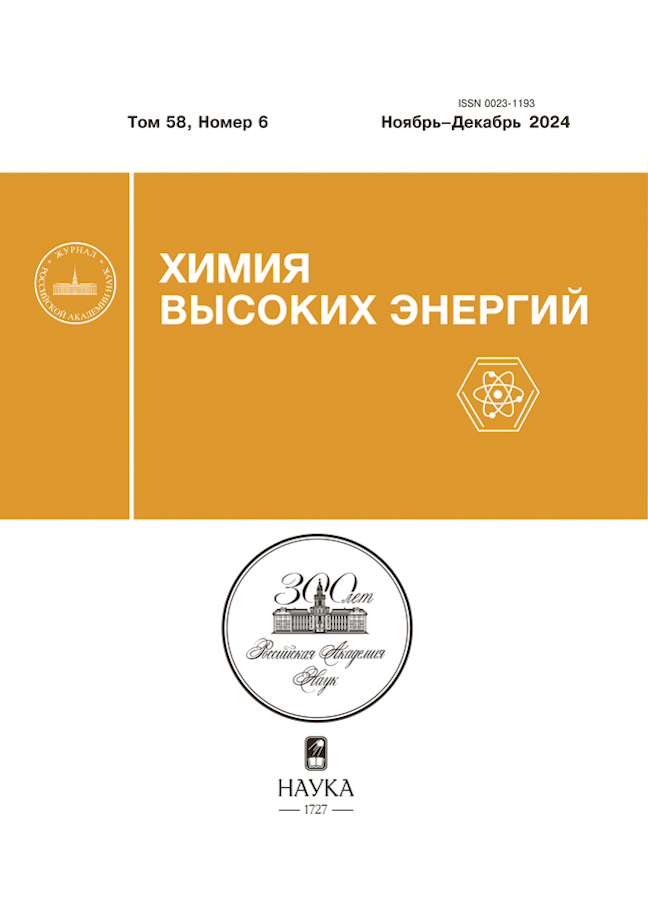Hypothetical possibility of hydrogen octaoxide formation in cavitation plasma discharge
- Authors: Aristova N.A.1, Ivanova I.P.2, Gul`ko N.K.3, Makarov A.A.3, Piskarev I.M.4
-
Affiliations:
- Nizhny Tagil Technological Institute, Yeltsin Ural Federal University
- Institute of Biology and Biomedicine
- IPLASMA
- Skobeltsyn Research Institute of Nuclear Physics, Moscow State University
- Issue: Vol 58, No 6 (2024)
- Pages: 489-494
- Section: PLASMA CHEMISTRY
- URL: https://cardiosomatics.ru/0023-1193/article/view/681216
- DOI: https://doi.org/10.31857/S0023119324060096
- EDN: https://elibrary.ru/THJDLL
- ID: 681216
Cite item
Abstract
This study examines the characteristics of water treated by cavitation plasma electric discharge. During the discharge process, hydroxyl radicals, hydrogen atoms and oxygen atoms are produced. The cycling of water through the discharge region results in the generation of secondary products with oxidising, reducing and slightly alkaline properties. The yield of oxidising and reducing agents was measured as a function of the total energy released in the discharge. The findings indicate that during the cyclic treatment of under the influence of cavitation discharge, hydrogen peroxide (H2O8) is produced. At a dose of 240 J/10 ml, the concentration is approximately ~10–3 mol/l.
Full Text
About the authors
N. A. Aristova
Nizhny Tagil Technological Institute, Yeltsin Ural Federal University
Email: i.m.piskarev@gmail.com
Russian Federation, Nizhny Tagil
I. P. Ivanova
Institute of Biology and Biomedicine
Email: i.m.piskarev@gmail.com
Russian Federation, Nizhny Novgorod
N. K. Gul`ko
IPLASMA
Email: i.m.piskarev@gmail.com
Russian Federation, Moscow
A. A. Makarov
IPLASMA
Email: i.m.piskarev@gmail.com
Russian Federation, Moscow
I. M. Piskarev
Skobeltsyn Research Institute of Nuclear Physics, Moscow State University
Author for correspondence.
Email: i.m.piskarev@gmail.com
Russian Federation, Moscow, 119992
References
- Rezaei F., Vanraes P., Nikiforov A. et al. // Materials. 2019. V. 12. P. 2751.
- Ihara S., Sakai T., Yoshida Y., Nishiyama H. // J. Electrostatics. 2018. V. 93. P. 110.
- Piskarev I.M. // IEEE Transactions on Plasma Science. 2021. V. 49. № 4. P. 1363.
- Levanov A.V., Sakharov D.V., Dashkova A.V. et al. // Eur. J. Inorg. Chem. 2011. P. 5144.
- Levanov A.V., Isaikina O.Ya. // J. Phys. Chem. 2022. V. 96. № 6. P. 843.
- Betul A.Y. // Word J. Adv. Res. Rev. 2021. V. 12. № 2. P. 179.
- Abramov V.O., Abramova A.V., Cravotto G. et al. // Ultrasonics – Sonochemistry. 2021. V. 70. 105323.
- Marsalek B., Marsalkova E., Odehnalova K. et al. // Water. 2020. V. 12. P. 8.
- Filipi A., Dobnik D., Guti'errez-Aguirre I. et al. // Env. Int. 2023. V. 182. 108285.
- Ihara S., Hirohata T., Kominato Y. et al. // Electrical Eng. Japan. 2014. V. 186. № 4. P. 656.
- Estifaee P., Su X., Yannam S.k. et al. // Sci. Rep. 2019. V. 9. Article 2326.
- Piskarev I.M., Ivanova I.P. // Plasma Chemistry and Plasma Processing. 2021. V. 41. P. 447.
- Charlot G. Les methods de la chimie analytique. in analyse quantitative menerale. Part II. Ed. Paris. France. Masson et Cie, 1961.
- Pikaev A.K. Modern radiation chemistry. Radiolysis of gases and liquids. M.: Nauka, 1986.
- Piskarev I.M., Ushkanov V.A., Aristova N.A., et al. // Biophysics. 2010. V. 55. № 1. P. 19.
Supplementary files













